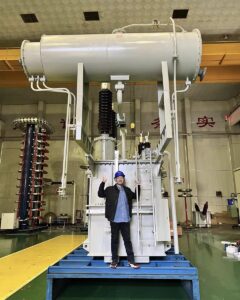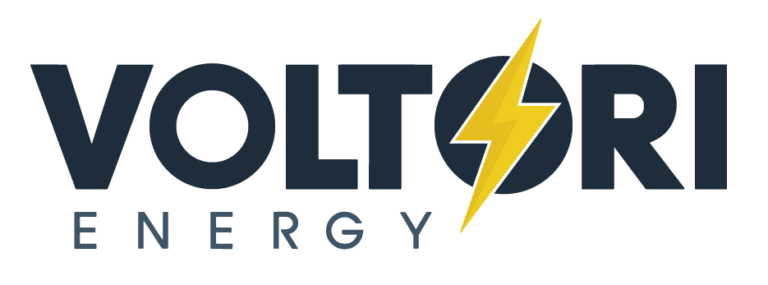Importing transformers to Canada can quickly become a paperwork nightmare. Missing a single document can lead to weeks of customs delays, additional fees, and frustrated project managers demanding answers.
To import transformers to Canada, you need a commercial invoice, certificate of origin, bill of lading, Canada Customs Invoice, B3 Customs Coding Form, cargo control documents, technical compliance documentation (CSA/cUL certification), and factory test reports showing the transformer's performance metrics.

When I began importing transformers to Canada years ago, I learned these documentation requirements through costly trial and error. Today, I'll share what I've discovered so you can avoid the same expensive mistakes. Properly preparing these documents before shipment can save you thousands of dollars and weeks of delays.
What are the Basic Customs Documents Required for Transformer Imports?
The mountain of paperwork required by Canadian customs often catches first-time importers off guard. Without these essential documents, your valuable transformers won't make it past the border.
The basic customs documents required for transformer imports to Canada include a detailed commercial invoice showing product specifications and value, certificate of origin (particularly important for CUSMA/USMCA benefits), and bills of lading that accurately describe the goods being transported.

| Document Type | Required Information | Common Mistakes |
|---|---|---|
| Commercial Invoice | - Complete transformer description - HS code (8504.xx.xx series) - Country of origin - Transaction value |
- Incomplete descriptions - Missing HS codes - Unclear valuation |
| Certificate of Origin | - Manufacturer details - Origin criteria - Authorized signature |
- Incorrect origin criteria - Missing signatures - Expired certificates |
| Bill of Lading | - Accurate weight and dimensions - Special handling requirements - Oil content declarations |
- Missing oil content information - Incomplete handling instructions |
For transformers coming from the United States, you'll want to take advantage of CUSMA benefits, which can eliminate duties. However, this requires a properly completed certificate of origin showing that the transformer meets the regional content requirements.
Working with a freight forwarder who understands these requirements can make a tremendous difference. In my early days, I had a shipment of distribution transformers held at customs for three weeks due to incomplete documentation, costing our company over $50,000 in project penalties.
Why are Technical Compliance Documents Critical for Canadian Imports?
I once had six brand-new transformers stuck at the border for a month. The reason? Our manufacturer provided UL certification instead of the CSA or cUL documentation that Canadian regulations require.
Technical compliance documents are critical for Canadian imports because all electrical equipment, including transformers, must meet Canadian electrical safety standards. This requires CSA or cUL certification, not just standard UL approval. Without proper certification, customs will refuse entry regardless of other documentation.
](https://voltoritransformer.com/wp-content/uploads/2025/08/image-3-technical-compliance-documentation-for-.png)
| Certification Type | Applicable For | Key Requirements | Acceptance in Canada |
|---|---|---|---|
| CSA Certification | All transformer types | - Testing to Canadian standards - On-site inspections |
Fully accepted nationwide |
| cUL Certification | All transformer types | - Testing to harmonized US/Canadian standards | Fully accepted nationwide |
| UL Certification | N/A for Canadian imports | - US standards only | Not accepted for Canadian imports |
| IEC Certification | N/A for Canadian imports | - International standards | Not accepted without CSA/cUL certification |
Technical compliance documentation typically includes the certificate of compliance from CSA or cUL, showing the transformer has been tested and meets Canadian electrical standards. These documents must clearly show the certification mark that will appear on the equipment itself.
For larger power transformers, additional documentation may be required showing compliance with energy efficiency regulations under Canada's Energy Efficiency Act. Environmental compliance documentation may also be necessary, particularly for larger transformers containing significant amounts of insulating oil.
Working with manufacturers who understand Canadian requirements can save significant time and frustration. I now include specific certification requirements in all purchase orders and verify documentation well before shipping. This proactive approach has eliminated customs delays for our transformer imports over the past three years.
What Specialized Forms Are Needed for Transformer Shipments?
Early in my career, I was shocked when a simple missing form delayed a critical transformer delivery by two weeks, threatening an entire project timeline. I vowed never to make that mistake again.
Specialized forms needed for transformer shipments include the Canada Customs Invoice (CCI), B3 Canada Customs Coding Form, and cargo control documents. For transformers specifically, you'll also need factory test reports showing performance metrics and technical specifications that prove the equipment functions properly.

| Document Type | Purpose | Required Content | Submission Timing |
|---|---|---|---|
| Canada Customs Invoice (CCI) | Official valuation document | - Detailed product description - Terms of sale - Transportation costs |
Before arrival at border |
| B3 Canada Customs Coding Form | Declaration for duties and taxes | - Correct HS classification - Valuation method - Country of origin |
At customs clearance |
| Factory Test Reports | Verification of performance | - Load/no-load losses - Impedance measurements - Insulation resistance |
Must accompany shipment |
Factory test reports have become increasingly important for transformer imports. These documents demonstrate that each transformer has undergone rigorous testing before shipment. Canadian authorities look for specific performance tests including load losses, no-load losses, impedance measurements, and transformer turns ratio tests.
For oil-filled transformers, additional documentation regarding the insulating fluid is essential. This includes certification that the oil is PCB-free and meets environmental standards. Some regions in Canada have specific requirements regarding oil containment and spill prevention measures.
In my experience, preparing a comprehensive document package well in advance of shipping is the best approach. I maintain a detailed checklist for each transformer import and begin assembling documentation weeks before the scheduled shipment.
How Do I Handle Certification for Different Types of Transformers?
The first time I imported a specialty transformer for a renewable energy project, I assumed the certification process would be similar to standard distribution transformers. This incorrect assumption cost us a six-week delay and nearly derailed the entire project.
To handle certification for different types of transformers in Canada, you must obtain specific CSA or cUL certification matching the transformer category. Power transformers, distribution transformers, and specialty units like phase-shifting or rectifier transformers all have different certification requirements based on their application and voltage class.
 alt with transformer certification types](https://voltoritransformer.com/wp-content/uploads/2025/08/image-5-certification-for-different-transformer.png)
| Transformer Type | Applicable Standards | Certification Process | Timeline |
|---|---|---|---|
| Power Transformers (>100kV) |
- CSA C88 - IEEE C57.12 series |
- Design review - On-site testing |
3-6 months |
| Distribution Transformers | - CSA C22.2 No. 47 - CSA C802 series |
- Type testing - Sample testing |
1-3 months |
| Specialty Transformers (Renewable Energy) |
- CSA C22.2 No. 47 - Application-specific standards |
- Custom test plans | 2-4 months |
| Rectifier Transformers | - CSA C22.2 No. 47 - IEEE C57.18 |
- Harmonic performance testing | 2-3 months |
For standard distribution transformers, CSA C22.2 No. 47 is typically the applicable standard, while power transformers may need to comply with CSA C88 or other standards depending on their specifications. Specialty transformers may require additional certification to specific standards based on their unique applications.
I've found that beginning the certification process during the early stages of procurement is essential. For custom-engineered transformers, certification requirements should be discussed with manufacturers during the design phase to ensure compliance is built into the unit from the beginning.
For transformers manufactured outside North America, the certification process becomes even more complex. While European manufacturers may have IEC certification, this alone is not sufficient for Canadian imports. These transformers will need additional testing and certification to Canadian standards.
When importing used or refurbished transformers, certification becomes even more challenging. These units often require field evaluation and certification by a Special Inspection Body recognized by Standards Council of Canada. This process involves on-site inspection and testing, which must be carefully planned.
Conclusion
Importing transformers to Canada requires thorough documentation preparation, including customs forms, technical compliance certificates, and factory test reports. Planning ahead and working with experienced brokers will save you significant time and money.
At Voltori Energy, we deliver custom-engineered power transformers for renewable energy with full certification and comprehensive documentation support across Canada.




